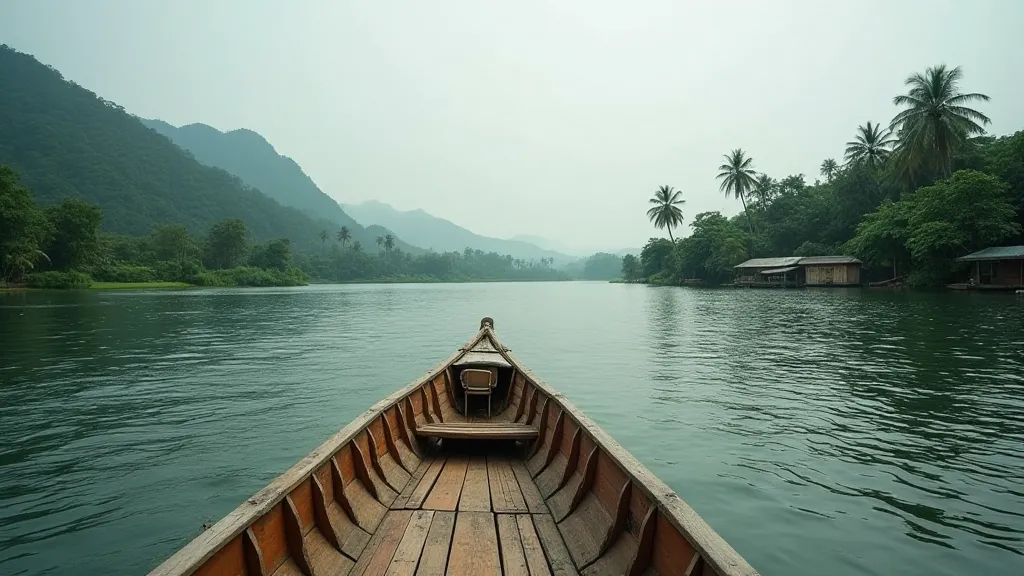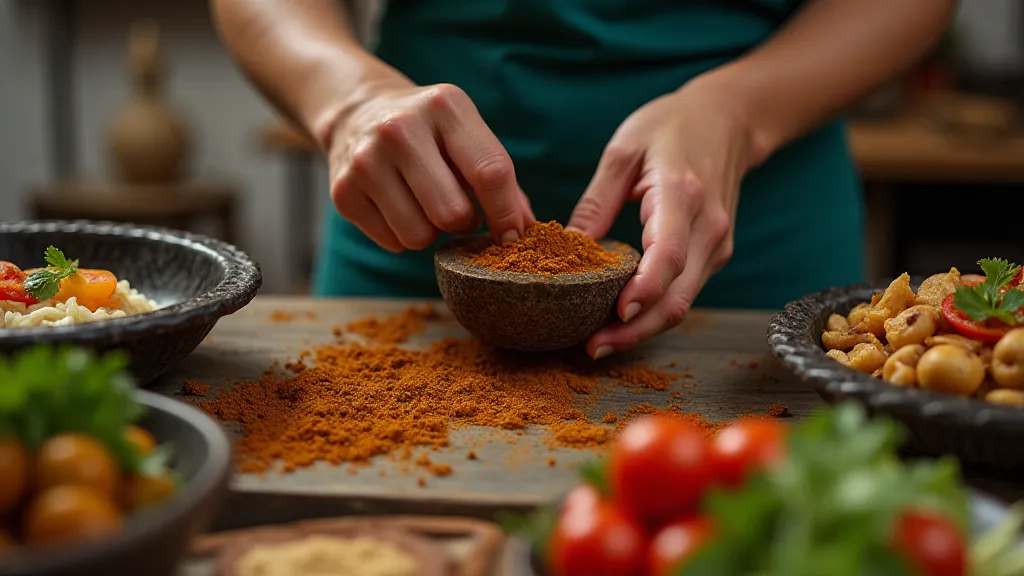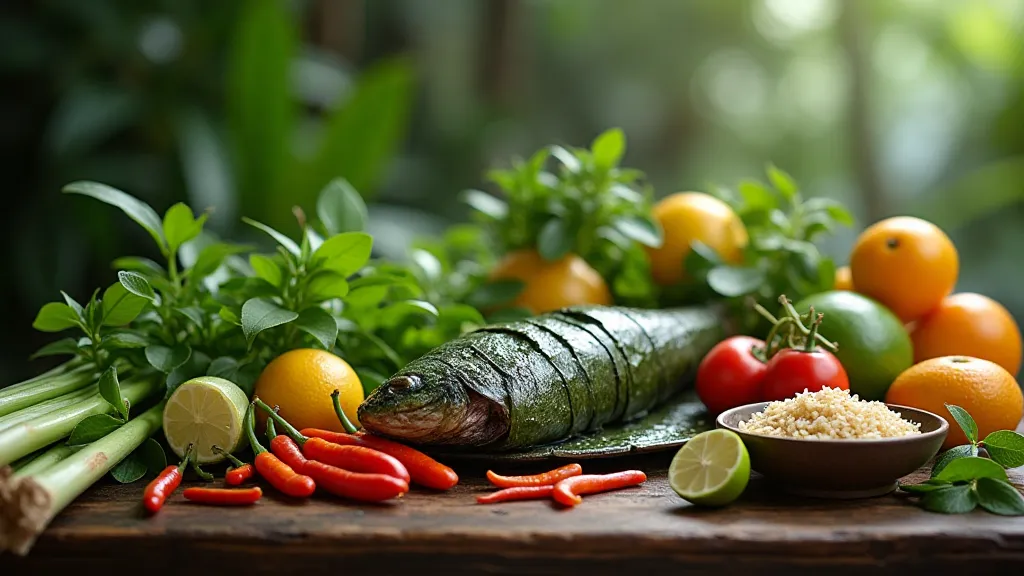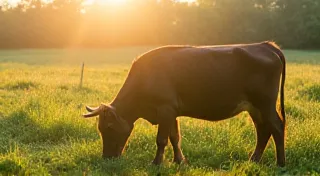The River's Gift: How the Mekong Dictates Flavors in Southeast Asian Rice Paddies
The air hangs heavy with the scent of damp earth and blooming jasmine. The sun beats down, but the shade offered by the dense foliage is a welcome respite. This isn’t just a picturesque scene; it’s the very essence of the Mekong River basin, a landscape and a cuisine inextricably linked. Few rivers in the world have shaped a culture as profoundly as the Mekong, acting not just as a waterway, but as a lifeline, a provider, and a subtle, constant instructor in the art of survival and, beautifully, in the art of cooking. It’s a story etched into the flavors of Laos, Thailand, Cambodia, Vietnam, and Myanmar, a story I first began to truly understand while volunteering on a small organic farm near Luang Prabang.
My role wasn’t glamorous. I helped with planting, weeding, and harvesting. But the most rewarding part wasn’t the physical labor; it was the conversations with the local farmers, the sharing of meals, and the gradual realization that the food wasn’t just food. It was a narrative—a testament to generations who had adapted their lives and their palates to the rhythms of the river. The Mekong, born in the Tibetan Plateau and flowing southeastward for over 4,350 kilometers, leaves an undeniable mark on everything it touches, particularly on the cuisine.
Historically, the Mekong’s influence extends far beyond simple sustenance. It served as the primary transport route for trade, connecting disparate communities and facilitating the exchange of goods and ideas. Before roads were commonplace, riverboats were the highways. This exchange of goods – spices from India, ingredients from China – subtly layered upon the foundation of local ingredients, creating a unique melting pot of flavors. Rice, of course, is the cornerstone. The Mekong’s fertile floodplains are remarkably well-suited for rice cultivation, and varieties are as diverse as the people who grow them. Sticky rice, glutinous rice, jasmine rice – each possesses a distinct aroma and texture, influencing the dishes they accompany. The complexity of fermentation, a practice so vital to the region’s preservation and flavor profiles, finds echoes in other culinary traditions around the globe, similar to the way cultures like Korea embrace practices like making kimchi – truly, the silent language of fermentation showcases the importance of preservation and flavor development. The deep connection between preservation techniques and culinary identity extends far beyond Southeast Asia; it’s a story told through countless dishes across the world.

The River's Bounty: Beyond Rice
While rice provides the base, the Mekong provides a staggering array of other essential ingredients. Freshwater fish, naturally, is a dietary staple. Pla Duk, a striped catfish, is practically synonymous with Thai cuisine. In Laos, steamed fish wrapped in banana leaves is a ubiquitous comfort food. But it’s not just about the readily available fish; the river also provides a crucial source of freshwater prawns, snails, and a host of other crustaceans. These, often seasoned with lemongrass, galangal, chili, and lime, deliver a vibrant punch of flavor. The ability to transform these readily available ingredients into such flavorful dishes speaks to the ingenuity of the people who call the Mekong region home.
Beyond the animal kingdom, the riverbank is rich with edible plants. Water lilies, lotus roots, and morning glory – all thrive in the Mekong's nutrient-rich waters. These are frequently incorporated into salads, soups, and stir-fries, adding a delicate bitterness and a refreshing crunch. The clay riverbanks themselves are a source of ingredients, yielding edible mud crabs and other unexpected delicacies. My host family in Laos taught me how to identify and prepare “khao poon,” rice noodles made from fermented rice, a laborious process deeply entwined with the region’s agricultural cycle. This process, demanding patience and expertise, mirrors the dedication and care found in traditional cuisine worldwide - much like the reverence for ingredients and techniques cultivated in the lavender fields of Provence, where the lavender fields' kiss infuses a unique character to the region's cuisine. It's a testament to how deeply rooted culinary traditions are within the landscape and the culture.
Challenges and Resilience: Adapting to the Changing Mekong
The Mekong’s generosity isn’s without its challenges. The river's seasonal fluctuations – the monsoons that bring life-giving floods followed by periods of drought – demand a constant adaptation. Traditional farming techniques have evolved to cope with these extremes, relying on intricate irrigation systems and resilient crop varieties. The increasing pressure from dams and agricultural expansion further complicate the situation, impacting fish populations and disrupting traditional farming practices. These pressures, while significant, haven’t broken the spirit of the Mekong communities; rather, they’re inspiring innovation and a renewed focus on sustainable practices.
Despite these hardships, the people of the Mekong basin demonstrate incredible resilience. They’re not just surviving; they’re innovating. They’re finding ways to preserve their culinary heritage while adapting to the changing environment. The flavors reflect this resilience – a delicate balance between tradition and innovation, between hardship and abundance. The tenacity of these communities and their ability to create something beautiful from challenging circumstances is a powerful reminder of the deep connection between food, place, and identity. The history of hardship and survival often finds its way into a culture's cuisine, imbuing it with a unique depth and character. Consider the traditions surrounding Scottish broth, where the hearth's legacy represents a long history of survival and resourcefulness; a parallel can be drawn to the Mekong communities’ ability to thrive despite environmental and economic pressures.
Flavor Profiles: A Culinary Signature
The cuisine of the Mekong region is characterized by a harmonious blend of sweet, sour, salty, spicy, and bitter flavors. Lemongrass, galangal, kaffir lime leaves, chili, fish sauce, palm sugar, and tamarind are all essential components. The use of fresh herbs and spices is paramount, adding layers of complexity and aroma. Fermentation plays a significant role, from the creation of fish sauce and shrimp paste to the fermentation of rice and vegetables. Dishes often feature a combination of textures, from the creamy smoothness of coconut milk to the crispy crunch of fried insects (a delicacy in some areas!). The interplay of these diverse elements creates a truly unique and unforgettable culinary experience.
Consider Khao Soi from Northern Thailand – a rich and creamy curry noodle soup, fragrant with coconut milk, turmeric, and chilies. Or Laap, a minced meat salad from Laos, bursting with fresh herbs and toasted rice powder. Each dish is a testament to the region’s unique culinary identity. The vibrancy and complexity of these dishes demonstrate a profound understanding of flavor balancing, a skill honed over generations.

Preserving the Legacy: A Chef’s Responsibility
The culinary traditions of the Mekong basin are more than just recipes; they’re a living embodiment of culture and history. As global influences continue to reshape the region, it’s crucial to preserve this culinary legacy. Many chefs are now actively working to revive traditional cooking methods, source local ingredients, and educate future generations about the importance of culinary heritage. This commitment to preserving tradition often involves meticulous attention to detail, from sourcing heirloom seeds to mastering age-old techniques – a dedication that can be seen in cuisines across the world, where even seemingly simple dishes hold layers of cultural significance. These efforts are often intertwined with broader initiatives focused on sustainable agriculture and community development.
It's a conversation that extends beyond the kitchen. It’s about understanding the interconnectedness of food, culture, and the environment. It’s about recognizing that the flavors of the Mekong are a gift – a gift that we have a responsibility to protect and cherish. The simple act of savoring a plate of steamed fish wrapped in banana leaves, or a bowl of fragrant Khao Soi, can be a profound act of cultural appreciation. The vibrant colors and intense aromas characteristic of this region's cuisine can be compared to the rich tapestry of traditions found in New Mexico, where the crimson thread weaves a story of identity and tradition through the cultivation and use of chiles.
My time along the Mekong taught me that food is a language, a history, and a connection to the land. It’s a testament to the ingenuity and resilience of the people who call this extraordinary river basin home. And as the river continues to flow, so too will its culinary legacy, shaping the flavors and the culture of Southeast Asia for generations to come.






